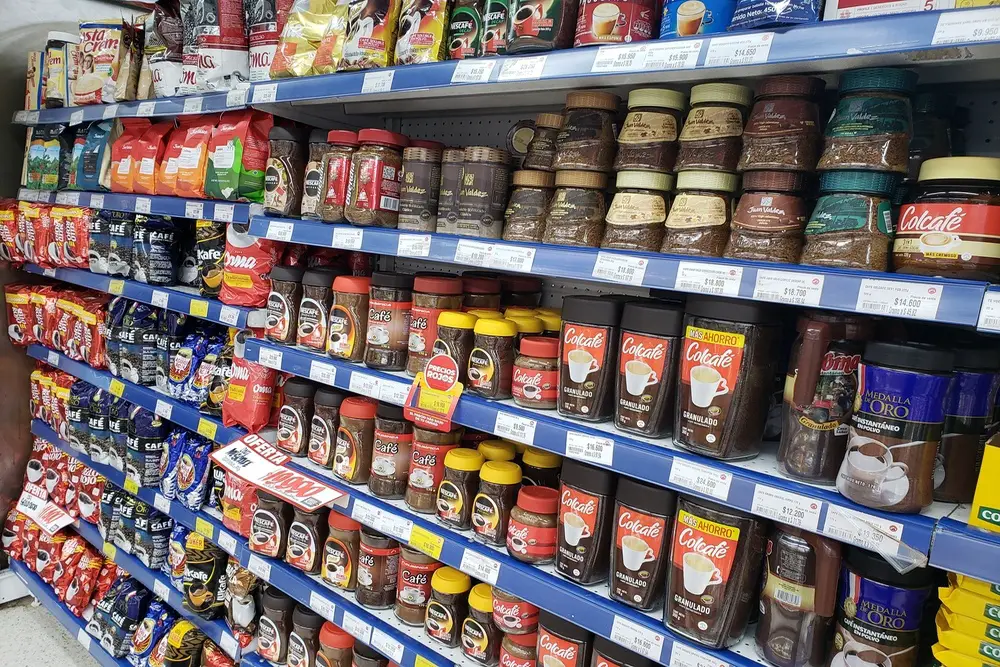More than 173 million bags of coffee are consumed worldwide every year. The coffee industry is also a highly saturated market. Therefore, it is more important than ever to stand out from the crowd of coffee shops.
Table of Contents
Creating a coffee brand – first steps
A brand doesn’t just say something about the product. It tells a story and It offers an experience. Before launching a brand, you should first do some research.
It’s not just a quick glance at a few pages on Google. Rather, it is about a detailed insight into the industry. Answer the questions: what do others sell, how do they sell, where do they sell their products, and who is the most popular in the industry?
Knowing all this, you need to decide where to fit in.
Basics of coffee branding
Before we dive into coffee branding, it’s important to understand the basics of branding. First, note the following points:
- Your values – do you brew ethical and eco-friendly coffee? Understand your values before you start developing a brand.
- Your buyer values – do you know who your customers are? What kind of coffee do they drink?
- Where does your brand sit in the industry – is your coffee expensive, cheap or similar to the competition and why? What is the target market for your coffee?
- How is your coffee different from your competitors – what makes your coffee different from the rest?
Start with the customer
When thinking about branding your coffee, it’s important to keep your target customer in mind. Segmentation is essential.
Your target customer determines the type of branding you choose for your coffee. For example, if you are targeting young professionals, you should create a modern and stylish brand. However, if you are targeting seasoned and seasoned coffee lovers, you should create a brand that communicates quality and sophistication.
How do you decide who your target customer is?
To better position your coffee brand in the saturated caffeine market, consider Buyer Create personas and identify your competition. A buyer persona is a fictional character made up of the statistics and beliefs of your target customers.
For example, what kind of coffee they drink, when they drink it, where they buy coffee, how old they are and which social networks they use. Understanding these things can help you improve your branding decisions.
There are some important questions to ask yourself:
- What kind of coffee do you produce?
- what is the price of your coffee
- Where is your coffee sold?
- Who is your competition?
The price of your coffee is an important factor to consider when determining your target customer. In general, the higher the price, the smaller the target audience. Because people who are willing to pay more for coffee are usually more demanding and have special tastes.
Do a competitor analysis
You’ll find that many coffee brands use the color brown in their branding. That’s because brown is a sign of security, structure, support, warmth… and coffee. Using a bright color for your coffee brand might set you apart from the competition, but it might also alienate your target audience.
Develop a business plan for your coffee brand
One of the most important steps in starting a coffee brand is developing a business plan. The process of creating your plan ensures you fully understand your market and business strategy. The plan also provides a roadmap that you can follow and, if necessary, submit to funding sources to raise capital for your brand.
Your business plan should include the following sections:
- Summary: This section should summarize your entire business plan so that readers can quickly understand the key details of your coffee brand.
- Business Description: This section provides the reader with the history and details of your coffee brand.
- Industry Analysis: Find key information about the coffee industry, the size of the industry and the trends affecting it.
- Customer Analysis: In this section, you will determine who your ideal customers are and what their demographics are. This is where the segmentation takes place.
- Competitive Analysis: List the main direct and indirect competitors you will face and consider how you intend to gain a competitive advantage.
- Product: Determine what products or services you will offer.
- Financial plan: How much capital is required and when will profit be made?
How much does it cost to create a coffee brand?
The initial budget for launching your coffee brand is highly variable and depends on many factors such as where your brand will be physically and virtually present. Below are the elements you need to get your brand up and running.
- Equipment and Consumables: Starting a coffee brand may require the purchase of some equipment, either for manufacturing the product or for packaging the goods, including equipment for the office if you are planning one.
- Retail Store: When planning space for your coffee brand, consider renting costs as this can be the most expensive part of running your business. These costs largely depend on your location. These costs vary by region as well as by specific areas of a city.
- Business Incorporation: There are some important costs associated with starting your business such as: B. for obtaining trademarks, copyrights and patents, which vary by country.
- Website, Advertising and Marketing.
- Employee.
Create your coffee brand identity
Your brand identity will bring your coffee to life. Some characteristics of brand identity are:
- Brand Name: What is the name of your coffee brand?
- Tone of Voice: Ask yourself how your coffee brand would speak if it were a person. The tone is reflected in all communication, from customer service to social media to your product descriptions.
- The Logo: One of the most exciting parts of the coffee branding process is designing your logo. It’s something that customers should recognize immediately and that defines the rest of the brand.
Brand image definition
Brand image should accurately reflect the look and feel of your coffee brand, which differentiates it from the competition. Image is important to show customers who may never have tasted your coffee what you’re really about.
The name, logo and even the colors used on the website or packaging should reflect the value and purpose of the coffee and make it stand out in the market. The product photos should also reflect the image and positioning of the brand.
Choose a name for your coffee brand
The name of your coffee is one of the most important aspects of your brand. Along with the logo, it’s the element that potential customers see first, so make sure it’s effective.
The name of your coffee shop should be memorable and easy to remember. It should also reflect the type of coffee you produce. It is best if you keep it short and to the point.
Studies show that the best names are no longer than six characters.
Creating a consistent brand across all channels
Once you’ve developed your brand, you need to make sure it’s consistent across all of your marketing channels.
That means using the same logo, colors, and tone across your website, social media accounts, and print.
By creating a consistent brand across all channels, you can build a strong and recognizable brand.
To tell a story
The only way to differentiate yourself from other coffee brands is to tell a story that your potential customers can relate to. Define why customers should choose you when many other brands offer similar products at lower prices.
It’s about adding a human touch to your brand. So, avoid talking about the offer and other aspects that lead the consumer to associate your brand with the idea of pure selling.
Write about yourself and your brand: what motivates you, why you do what you do, what kind of customers you want to serve. You can borrow ideas from other companies, but make sure you use them as inspiration and don’t literally copy them. Define who you are: a supplier, a family, an expert?
Write about your customers too. Don’t use too much “we” when writing your story, customers will be more aware of your brand if you tell them how you feel about your customers.
Also, be consistent across all media where your brand is present. Try to reflect your story on all pages of your website and have a design that matches your intention.
Remember that the purpose of the story is to sell your brand, so you must also be selling a dream, not just coffee.
Implementation of a quality control program
Some consider quality control programs a “necessary evil.” However, if used properly, they can help your brand compete in the market by offering consistently good products. This is particularly important for a coffee company, as it is a very variable product.
Quality control programs ensure that consumer needs and expectations are always met.
The keys to an effective and efficient quality control program are:
- Effectively conducting, conducting an appropriate number of tests, and conducting tests to established standards.
- The tests are most useful when the coffee enters the next stage of the production chain. For example, it is very important that a batch of green coffee is of acceptable quality before it is purchased or roasted in large quantities. Likewise, the acceptability of a roasted product should be determined prior to packaging.
- Accurate recording of test results and regular analysis of collected data.
- Communication in the form of regular reports to all parties involved. This is an overview of some of the general concepts of quality control.
How can you increase awareness of your coffee brand?
In general, people don’t switch brands just because they’re told to. You try something new and then decide to make it a habit. In the case of coffee, this is achieved by tasting different samples. In this case it is not the individual customer but the owners of cafes and the like. You need to explain to these people what you are offering and give them a chance to test the product.
The samples you give to these decision makers should be accompanied by descriptions of the product, photos, drawings, and anything else necessary to tell your story. You have to convince these people that your brand will be the best.
Use your contacts, connections and allies
Making regular contacts and getting to know new people has its advantages if you do it in a targeted and forward-looking manner. In terms of your business intent, your networking goals will filter your business relationships.
Contacts are people you have met and with whom you have developed an intimacy. There isn’t a strong bond, but there is potential for growth. Aside from customers, contacts often make up the largest part of a person’s business network.
Contacts, in turn, complement your professional goals and connect you with potential. The perspective is not always mutual, ie one can be a link for the other, but not the other way around.
After all, real business partners are the culmination of all your networking efforts. Allies embody full professional relationships, they can also be considered friends.
Conclusion
To be successful in business, your brand must own your business. The brand needs to convey values and a mission and clearly present the product you are offering while also appealing to your target customers.



